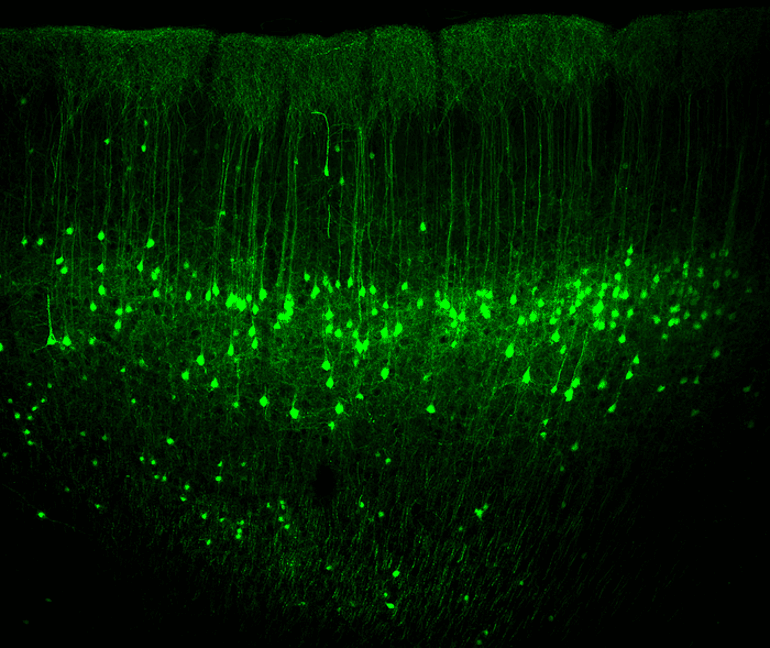Summary: New findings about neural activity in the sensorimotor cortex may aid in the development of neuroprosthetics to help compensate for neuronal dysfunctions.
Source: University of Freiburg
An interdisciplinary research team at the University of Freiburg has found important clues about the functioning of the sensorimotor cortex.
The new findings on neuronal activities in this brain area could be helpful for the further development and use of so-called neuroprostheses.
These have an interface with the nervous system and are intended to help compensate for neuronal dysfunctions.
“Our results will contribute to the improvement of neuroprosthetic approaches while shortening the training period of patients with prostheses,” says neurobiologist Prof. Dr. Ilka Diester from the Faculty of Biology at the University of Freiburg.
The results have just been published in the journal Nature Communications.
Understanding the brain under more natural conditions
The research project also involved the working groups of computer scientist Prof. Dr. Thomas Brox from the University of Freiburg and neuroscientist Prof. Dr. Daniel Durstewitz from the Central Institute of Mental Health in Mannheim.
The team found evidence of conserved structures of neuronal activity in the sensorimotor cortex of freely moving rats. The electrophysiological recordings across the entire bilateral sensorimotor cortex allow conclusions about the respective contributions of the premotor, motor and sensory areas.
In particular, the researchers found a clear gradient for a contralateral bias, i.e. for movements of the opposite half of the body, from anterior to posterior regions.
Previous findings on sensorimotor cortex are mostly based on highly constrained, stereotyped movements in a laboratory setting.

The current work uses recordings on freely moving subjects using 3D tracking and addresses the question of the transferability of knowledge about neural control of movements from constrained behavior to a freely moving condition, a prerequisite for understanding the brain under more natural conditions as well as for the further development of neuroprosthetic devices.
Categories of behavior across individuals
The team used a dimensionality reduction and neural data alignment method. Thus, the high-dimensional neuronal patterns were reduced to a low-dimensional representation by means of their similarity to other patterns, resulting in geometric structures in the visual representation.
These geometric patterns were then automatically aligned with each other, similar to the image of holding a magnet to a pack of nails. These then align themselves in a certain direction.
Based on such aligned geometric structures, the researchers were able to decipher behavioral categories across recording sessions and even across individuals, and find corresponding evidence of conserved structures of neural activity.
Funding: The work is part of the BrainLinks-BrainTools research center at the University of Freiburg, which is funded by the Ministry of Economics, Science and the Arts of Baden-Württemberg as part of the sustainability program for projects of the Excellence Initiative II.
About this electrophysiology and neuroprosthetics research news
Author: Rimma Gerenstein
Source: University of Freiburg
Contact: Rimma Gerenstein – University of Freiburg
Image: The image is credited to lka Diester
Original Research: Open access.
“Conserved structures of neural activity in sensorimotor cortex of freely moving rats allow cross-subject decoding” by lka Diester et al. Nature Communications
Abstract
Conserved structures of neural activity in sensorimotor cortex of freely moving rats allow cross-subject decoding
Our knowledge about neuronal activity in the sensorimotor cortex relies primarily on stereotyped movements that are strictly controlled in experimental settings.
It remains unclear how results can be carried over to less constrained behavior like that of freely moving subjects. Toward this goal, we developed a self-paced behavioral paradigm that encouraged rats to engage in different movement types.
We employed bilateral electrophysiological recordings across the entire sensorimotor cortex and simultaneous paw tracking. These techniques revealed behavioral coupling of neurons with lateralization and an anterior–posterior gradient from the premotor to the primary sensory cortex.
The structure of population activity patterns was conserved across animals despite the severe under-sampling of the total number of neurons and variations in electrode positions across individuals.
We demonstrated cross-subject and cross-session generalization in a decoding task through alignments of low-dimensional neural manifolds, providing evidence of a conserved neuronal code.






